Our History
Kenneth Lynch & Sons has a history that spans over 90 years that started with the metal craft of Kenneth Lynch. While the materials we use have shifted over the years the dedication to quality in craftsmanship has not.
-

1906
Kenneth Lynch was born in New Haven, Connecticut. He left home in his early teens to join the Cavalry, not unlike other young men of the time. He trained in Texas and Arizona and quickly became an accomplished Farrier. A Colonel in his Cavalry division took notice of his talents and arranged for Lynch to be sent to Germany for training in fine metal craft and armor.
By the age of 19 Lynch was back in the United States and was making a name for himself in the ornamental metal work arena. Collectors, enthusiasts and movie houses were soon commissioning armor. It was this work that brought him to some of his greatest achievements. -

1927
Although our heritage firm began in Connemara, Ireland some 300 years ago, Kenneth Lynch & Sons was established in 1927. Kenneth Lynch completed his apprenticeship in ornamental ironwork in Europe and carried on the torch of past ironwork craftsmen first in a shop in Manhattan and Long Island City, New York.
-
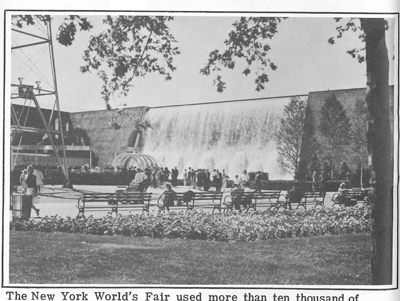
1937
The World’s Fair was to be held in New York in 1938 and 1939, the influential City Planner and Parks Commissioner Robert Moses worked with Lynch to re-design a bench that was previously used in New York. They collaborated to have a comfortable bench that would also use advances in iron casting techniques to facilitate the production of hundreds of benches.
At this time Lynch moved his shop to Long Island City in order to be in close proximity to the Fair Grounds. Lynch not only fabricated benches for the 1939 World’s Fair but also assisted in several other exhibition spaces that required iron ornaments, such as ‘Astronomer’ by Carl Miles, ‘Spirit of Flight’ by Gertrude V. Whitney and ‘Mercury’ by Robert Foster which was placed on the front of the Ford exhibit. -
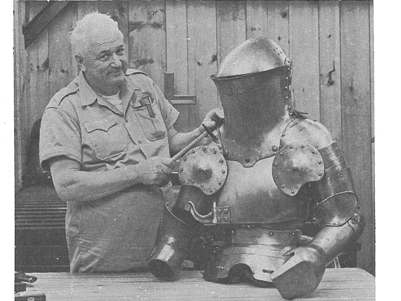
1938
Shortly after the completion of the work for the 1939 World’s Fair, Lynch moved his operations to Wilton, CT, a location he later touted to architects as ‘a profitable hour from New York City.’ The property began with a few work shop buildings, a residence for Lynch’s family and an old farmhouse that was converted into apartment type housing for employees.
Over the years additional buildings and businesses were housed on the property. It was in Wilton that Lynch raised his four children Patricia, Winifred, Michael and Timothy. Michael and Timothy were both trained in the metal working trades by working alongside their father and the skilled craftsmen he employed. In addition, Lynch taught both of his sons the necessary skills to fabricate and construct a building, so well so that his oldest son Michael finished his career as a fine home builder in the Fairfield County area. -
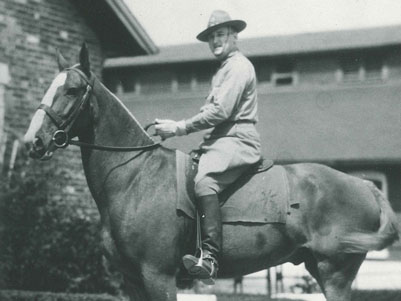
1941
During the war years of 1941- 1946 Lynch was called to duty with the Army and temporarily closed his factory. Lynch continued to keep residence in Connecticut when on leave from his duties in Aberdeen, MD, as Major in charge of bomb disposal. This was a gruesome job and left a deep scar on his heart, as many of his men perished in this dangerous task.
During this time period The Pederson Golf Club Company was leasing space in his factory, but were making rifle stocks rather than golf clubs. Interestingly in 1943 Lynch was sent back to Wilton by the Army and was appointed the factory manager for Pederson Golf to oversee production of these items, but Lynch was never an owner of that company. -
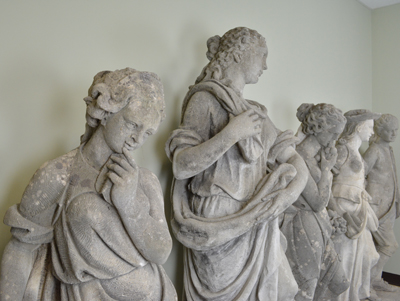
1950
Kenneth Lynch began collecting and producing all types of ornaments with a heavy emphasis on Italian Carved Limestone. Lynch traveled extensively through Europe and Asia making these purchases and sending full containers back to the United States. It was back in the workshop that he employed many artisans to make molds to enable these ornaments to be made in Cast Stone. It was his idea to make available the beautiful artistry of hand carved statuary to the general public by offering the items in a less expensive material. In 1955, while Lynch’s oldest son Michael was training in Munich, Germany, at the Kunstlerei, learning metal working from the masters, the two traveled to Italy on one such buying trip.
-

1966
Kenneth Lynch had been publishing catalogs of available artwork since the origination of his business in Manhattan, NY. These catalogs focused mainly on hand crafted metal items such as andirons, door knockers, and signs. However it was his catalog in 1966 that catapulted the firm to nationwide recognition as the leader in garden ornamentation. The cast stone items first appeared in this catalog. Lynch arranged to mail the catalog to every registered Landscape Architect. This catalog proved a worthy resource for many years and it still graces the shelves of many established architecture firms today.
-
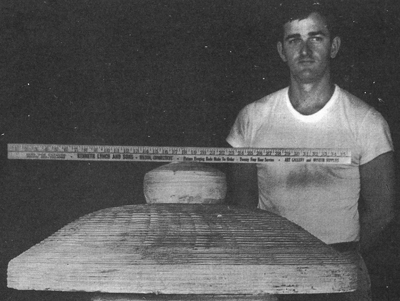
1976
Lynch’s youngest son Timothy began working full time at the company after having completed his studies as a Merchant Marine, which he practiced for 4 years on the oceans of the trade world. Timothy’s experience of hands on knowledge learned from growing up in the business plus his education in engineering prepared him to become a valuable leader.
-

1980
Timothy Lynch began working far more regularly with the New York City Parks Department landscape architects. They partnered on the design and fabrication of additional products to coordinate with the 1939 and 1964 park benches. Items such as picnic tables, game tables and bicycle racks were conceived by Christopher Crowley, RLA. In addition to these park fixtures we continued to put our metal working past to use in the creation of custom steel forms used for colored concrete pads typically seen in splash pads.
-
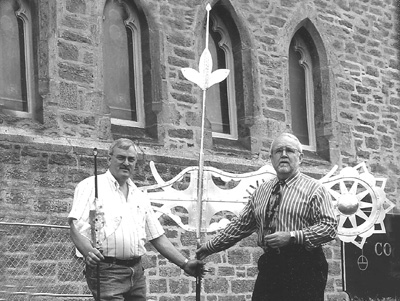
1988
Timothy Lynch, the son of Kenneth Lynch took over the company in January, 1988. Prior, Timothy began an eleven year apprehenticeship; learning first-hand the crafstmanship and excellence required to create fine quality work.
-
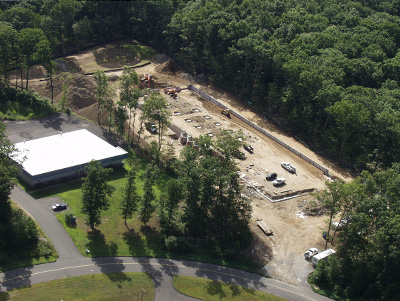
2007
Timothy Lynch began the task of moving an 80 year old business in 2006. The location and buildings in Wilton were no longer meeting the needs of the company as the workshops were spread over several buildings and the population of the general area no longer included craftsmen. Timothy looked at locations in New York, New Jersey and Pennsylvania but ultimately felt the location in Oxford, CT, would be the best fit. While the shop is no longer just an hour from New York City, we remain as valuable of a resource as we were in Wilton. A benefit to our customers now is our proximity to Connecticut’s Antique Trail in Woodbury, CT.
-
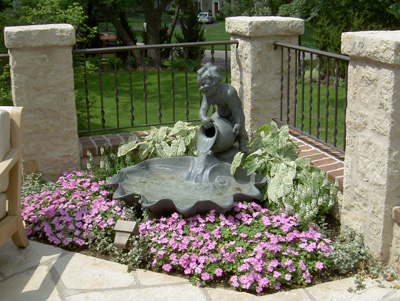
2011
Kenneth Lynch & Sons purchased the assets of Florentine Craftsmen of Long Island City, NY; previously with a showroom in Manhattan. They had always been friendly competitors in the field of lead statuary. With that purchase Kenneth Lynch & Sons became the sole producer of ornamental lead in the United States. Adding the aluminum garden furniture to our offerings was an easy transition as our craftsmen are fully trained in all metal welding.
-
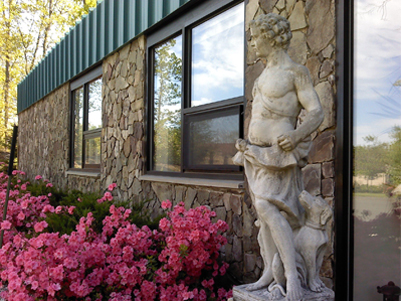
2012
The ownership of Kenneth Lynch & Sons moved to the third Lynch generation in 2012. Timothy Lynch sold the business to his second oldest daughter, Maria Lynch Dumoulin. Maria had held various roles in the company since 1995 and was well versed in all divisions enabling an easy transition. Maintaining the dynamics of a family business, Maria’s husband Derrick Dumoulin, has been involved since 2001.
-
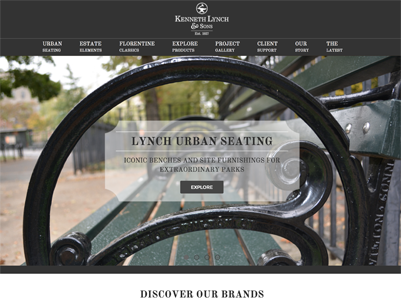
2017
Celebrating 90 years of craftsmanship, the company launches rebranding and an updated website to better represent the product lines.
